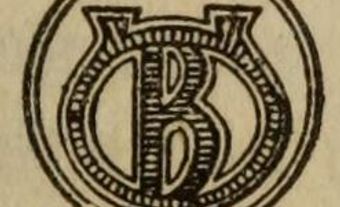The Winnipeg General Strike of 1919 was the biggest strike in Canadian history. A “strike” means that workers refuse to go to work. A “general strike” is a type of strike in which workers from different industries go on strike at the same time. (See also Strikes and Lockouts; Labour Organization.) The Winnipeg General Strike took place between 15 May and 25 June 1919. Factory workers, store workers and transit workers went on strike. Some workers from the public sector, such as policemen, firemen and postal workers joined the strike. Approximately 30,000 workers went on strike. The main goal of the strike was to improve working conditions. The federal government believed the strikers wanted to start a communist revolution. It called in the Royal North-West Mounted Police to stop it. Many strikers were arrested. Some were hurt. And two people were killed. The strike proved to be tragic. But it convinced some Canadians to take the plight of workers very seriously. One of these Canadians was J.S. Woodsworth. He helped form the Co-operative Commonwealth Federation. It was a socialist labour party. (See Socialism). One of its main goals was to help workers.
(This article is a plain-language summary of the Winnipeg General Strike. If you are interested in reading about this topic in more depth, please see our full-length entry, Winnipeg General Strike of 1919.)

Causes of the Winnipeg General Strike
In 1919, many Canadian workers made barely enough money to survive. Worse still, many workers were unemployed. Many of them had been soldiers in the First World War. Because of the difficulties they faced at this time, many workers in Canada began to think that they should fight for better wages and working conditions. To do so they thought they should join or form unions. (See Labour Organization) A union is an institution that aims to improve workers’ lives. In March 1919, workers in Calgary founded the “One Big Union.” This union scared governments. It also scared capitalists. Many believed it was a communist organization. Since the 1917 communist revolution in Russia, communist and socialist ideas were becoming more popular.
Most of the workers who took part in the Winnipeg General Strike were neither socialists nor communists. They simply wanted to have higher wages and better working conditions. The first workers to go on strike were in the building and metal trades. Their employers would not listen to their demands. They then went on strike. Soon thereafter, on 15 May, the Winnipeg Trades and Labour Council (WTLC) called for a general strike. Tens of thousands of workers responded. About 30,000 workers from all over Winnipeg went on strike. The strikers included some police, postal workers and telephone workers. The city stopped functioning.
Opposition to the Strike
Influential capitalists and politicians opposed the strike. They formed the “Citizens’ Committee of 1,000.” They argued that the leaders of the strike were communists. According to them, these leaders planned to start a communist revolution. They also argued that the leaders were all dangerous foreigners who wanted to destroy Canada. These accusations had little truth to them. Some of the leaders were indeed born in Britain. However, one of the most important leaders of the strike, J.S. Woodsworth, was born in Ontario. Also, the leaders were not communists. And lastly, they did not want to destroy Canada. Nonetheless, many Canadians believed what the Committee said about the leaders of the Winnipeg General Strike. Fear of communism was high.
The Crushing of the Strike
The federal government supported the committee. It wanted to crush the strike too. To do so, it changed Canada’s immigration law (see Immigration Policy in Canada). Because of this change, British-born Canadians could be deported. Many of the leaders of the strike were born in Britain. The government moved in to crush the strike on 17 June. Strike leaders were arrested. On 21 June, the Royal North-West Mounted Police injured 30 protesters and killed two more. This day has come to be known as Bloody Saturday. Four days later, on 25 June, the end of the strike was announced. The strike officially ended the morning of 26 June 1919.

 Share on Facebook
Share on Facebook Share on X
Share on X Share by Email
Share by Email Share on Google Classroom
Share on Google Classroom


